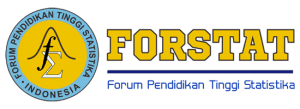PERBANDINGAN METODE ANN BACKPROPAGATION DAN ARMA UNTUK PERAMALAN INFLASI DI INDONESIA
Abstract
Keywords
Full Text:
PDFReferences
Apriaini, Y., & Sofian, I. . (2017). Metode Peramalan Jaringan Saraf Tiruan Menggunakan Algoritma Backpropagatin (Studi Kasus Peramalan Curah Hujan Kota Palembang). Indonesian Journal of Mathematics and Natural Sciences, 40(2), 87-91.
Aprileven, H. P. (2015). Pengaruh Faktor Ekonomi Terhadap Inflasi yang Dimediasi oleh Jumlah Uang Beredar. Economics Development Analysis Journal, 4(1), 32-41.
Ardiansyah, H. (2017). Pengaruh inflasi terhadap pertumbuhan ekonomi di Indonesia. Jurnal Pendidikan Ekonomi, Vol.5(No.3).
Dongare, A. D., Kharde, R. R., & Kachare, A. D. (2012). Introduction to Artificial Neural Network ( ANN ) Methods. International Journal of Engineering and Innovative Technology (IJEIT), 2(1), 189-194.
Fauji, S. A., & Kusumastuti, A. (2015). Analisis Fungsi Aktivasi Jaringan Syaraf Tiruan untuk Mendeteksi Karakteristik Bentuk Gelombang Spektra Babi dan Sapi. Unisda Journal Mathematics and Computer Science Jurusan (UJMC), 1(1), 55-64.
Hauriza, B., Muladi, M., & Wirawan, I. M. (2021). Prediksi Tingkat Inflasi Bulanan Indonesia Menggunakan Metode Jaringan Saraf Tiruan. Jurnal Teknologi Dan Informasi, 11(2), 152-167. https://doi.org/10.34010/jati.v11i2.4924
Karomah, Y., & Hendikawati, P. (2014). Estimasi Parameter Boostrap pada Proses ARMA dan Aplikasinya pada Harga Saham. UNNES Journal of Mathematics, 3(2), 126-135.
Ngestisari, W., Susanto, B., & Mahatma, T. (2020). Perbandingan Metode ARIMA dan Jaringan Syaraf Tiruan untuk Peramalan Harga Beras. Indonesian Journal of Data and Science (IJODAS), 1(3), 96-107.
Nugraha, H. G., & Azhari, S. (2014). Optimasi Bobot Jaringan Syaraf Tiruan Mengunakan Particle Swarm Optimization. IJCCS (Indonesian Journal of Computing and Cybernetics Systems), 8(1), 25-36. https://doi.org/10.22146/ijccs.3492
Pandji, B. Y., Rohmawati, A. A., & Indwiarti. (2019). Perbandingan prediksi harga saham dengan model arima dan. Indonesian Journal of Computing, 4(2), 189-198. https://doi.org/10.21108/indojc.2019.4.2.344
Panjaitan, H., Prahutama, A., & Sudarno. (2018). PERAMALAN JUMLAH PENUMPANG KERETA API MENGGUNAKAN METODE ARIMA, INTERVENSI DAN ARFIMA (Studi Kasus : Penumpang Kereta Api Kelas Lokal EkonomiDAOP IV Semarang) 1,2,3. JURNAL GAUSSIAN, 7(1), 96-109.
Pawestri, V., Setiawan, A., & Linawati, L. (2019). Pemodelan Data Penjualan Mobil Menggunakan Model Autoregressive Moving Average Berdasarkan Metode Bayesian. Jurnal Sains Dan Edukasi Sains, 2(1), 26-35.
Wahyuddin. (2019). Prediksi Inflasi Indonesia Memakai Model ARIMA dan Artificial Neural Network. Jurnal Tata Kelola Dan Kerangka Kerja Teknologi Informasi, 5(2), 57-63.
Yasin, M. (2020). Analisis Pendapatan Asli Daerah dan Belanja Pembangunan Terhadap Pertumbuhan Ekonomi Di Kabupaten/Kota Jawa Timur. Journal of Economic, Business and Accounting, 3(2), 465-472.
Yusuf, F. I., & Anjasari, D. H. (2018). Metode Triple Exponential Smoothing Holt-Winters untuk Peramalan Jumlah Wisatawan Nusantara di Kabupaten Banyuwangi. Unisda Journal of Mathematics and Computer Science (UJMC), 4(2), 1-6.
DOI: https://doi.org/10.34312/jjps.v3i2.15440
Refbacks
- There are currently no refbacks.
Copyright (c) 2022 Jambura Journal of Probability and Statistics

This work is licensed under a Creative Commons Attribution-NonCommercial 4.0 International License.







.jpg)






